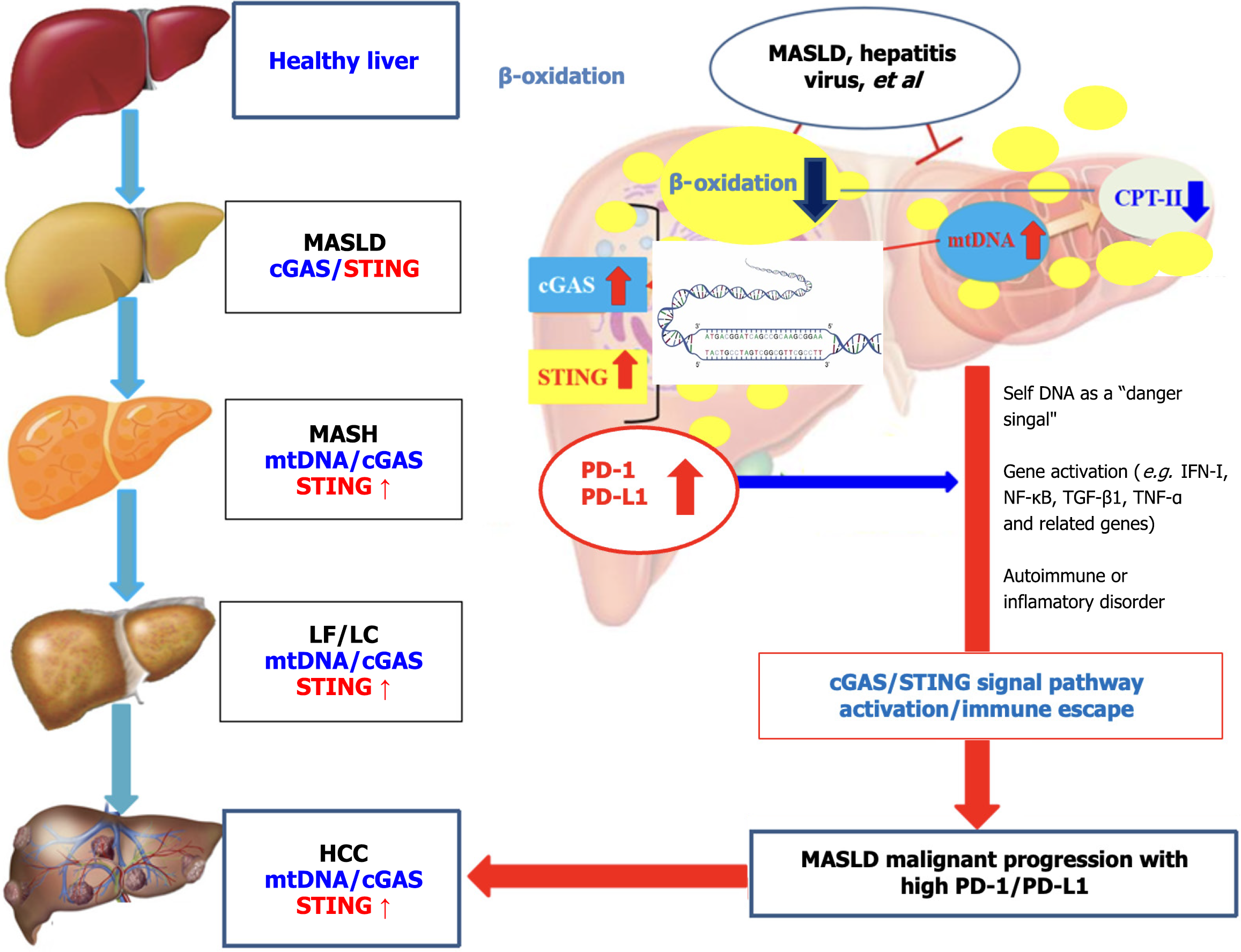Copyright
©The Author(s) 2025.
World J Gastrointest Oncol. May 15, 2025; 17(5): 104842
Published online May 15, 2025. doi: 10.4251/wjgo.v17.i5.104842
Published online May 15, 2025. doi: 10.4251/wjgo.v17.i5.104842
Figure 1 Schematic representation of metabolic dysfunction-associated steatotic liver disease malignant progression with increasing programmed cell death protein-1/programmed cell death protein ligand-1.
Lipid accumulation in liver tissue promotes chronic inflammation with mitochondrial DNA (mtDNA) damage. High lipid content accumulates into hepatocytes, resulting in innate immunity activation and toxic molecules production, such as reactive oxygen species, cytokines and programmed cell death protein-1 (PD-1)/programmed cell death protein ligand-1 (PD-L1). The continuous inflammatory environment activates the adaptative immune response, inducing the increase in Treg, cluster of differentiation 8 (CD8) + T cells, macrophages polarization into the M1 phenotype, and the production of inflammatory cytokines, such as nuclear factor kappa-B, interferon-γ, tumor necrosis factor-α. Metabolic dysfunction-associated steatotic liver disease (MASLD) was achieved by up-regulated PD-L1 by the activation of cGAS-STING signal pathway with mtDNA overflow and up-regulated PD-1/PD-L1 to promote MASLD malignant transformation. The persistent inflammation occurs in all stages of MASLD progression, mostly in metabolic dysfunction-associated steatohepatitis, and during the transition to hepatocellular carcinoma, this inflammatory status is also responsible for CD8 + T cells differentiating into exhausted T lymphocytes (immune escape). MASLD: Metabolic dysfunction-associated steatotic liver disease; MASH: Metabolic dysfunction-associated steatohepatitis; LF: Liver fibrosis; LC: Liver cirrhosis; HCC: Hepatocellular carcinoma; mtDNA: Mitochondrial DNA; CPT-II: Carnitine palmitoyltransferase II; PD-1: Programmed cell death protein-1; PD-L1: Programmed cell death protein ligand-1; IFN: Interferon; NF-κB: Nuclear factor kappa-B; TNF: Tumor necrosis factor; TGF: Transforming growth factor.
- Citation: Xu M, Ruan TT, Tang H, Fang RF, Sai WL, Xie Q, Yao DF, Yao M. Up-regulated programmed cell death protein-1/its ligand 1 expression promotes metabolic dysfunction-associated steatotic liver disease malignant progression. World J Gastrointest Oncol 2025; 17(5): 104842
- URL: https://www.wjgnet.com/1948-5204/full/v17/i5/104842.htm
- DOI: https://dx.doi.org/10.4251/wjgo.v17.i5.104842









